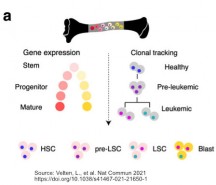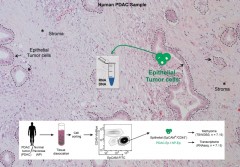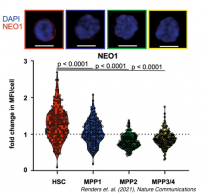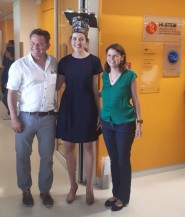
Previously, extensive research has focused on hematopoietic stem cells (HSCs) and distinct multipotent progenitor populations (MPP1-4) contained within the Lin- Sca-1+ c-Kit+ (LSK) compartment. In this new study, researchers around Pia Sommerkamp now phenotypically define and functionally characterize MPP5 (LSK CD34+ CD135- CD48- CD150-), a novel subset in the progenitor landscape. The team, which involved colleagues at the Max-Planck Institute in Freiburg, at the Institute Curie in Paris and at Harvard University, reports that MPP5 provide initial emergency myelopoiesis followed by stable contribution to the lymphoid lineage in transplantation settings. Using different in vitroand in vivo approaches as well as RNA-seq and single-cell (sc) RNA-seq analysis, MPP5 were shown to represent a hub within the MPP network.
The work was co-supervised by Andreas Trumpp from HI-STEM/DKFZ and Nina Cabezas-Wallscheid, HI-STEM Alumni and now a junior group leader at the Max-Planck-Institute of Immunobiology in Freiburg, and was published in Blood.
Further Reading:
Publication: Sommerkamp, P., Romero-Mulero, M. C., Narr, A., Ladel, L., Hustin, L., Schonberger, K., Renders, S., Altamura, S., Zeisberger, P., Jacklein, K., Klimmeck, D., Rodriguez-Fraticelli, A., Camargo, F. D., Perie, L., Trumpp, A. & Cabezas-Wallscheid, N. (2021) Mouse multipotent progenitor 5 cells are located at the interphase between hematopoietic stem and progenitor cells, Blood. 137, 3218-3224. doi: 10.1182/blood.2020007876 PMID: 33754628




